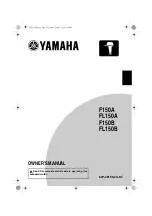TOWER SYSTEM
33. Wait for signal stabilization (about 10
seconds), avoiding movements and with
relaxed respiration. The heart rate is
shown in the red highlighted box below.
The EKG signal should be similar to the
one shown below.
NOTE:
The MED-EKG connector to the TWR-
S08MM128 is not very secure and the electrode is
very sensitive. Very little movement can yield lot of
noise. The ideal way is to connect a three-lead cable
(two electrodes and one ground) via J12 header and
use external electrodes. Freescale does not provide
this lead due to regulations in different countries,
therefore the user must purchase it separately. This
lab was tested with Welch Allyn ECG Lead Wires for
Atlas Monitor, three-lead AHA.
34. If the signal varies, try different finger
positions, but wait for stabilization time
(usually 10 seconds). Experiment with this
step until the GUI is drawing a
similar
EKG
signal to the image at left.
35. If the graphed signal amplitude is too small
or too big, press and release SW4 to reduce
the gain or SW2 to increase the gain from
the TWR-S08MM128 module. SW4 will
have no effect once OPAMP2 reaches the
smallest gain of 2. SW2 will have no effect
once OPAMP2 reaches the highest gain of
17. The signal amplitude (in peaks) must
be between 8000 and 20000 units (shown
in the vertical axis) for correct heart rate
calculation. Increase the gain if your EKG
signal is not within that range.
NOTE:
On the TWR-S08MM128, LED2 (silk-screened
label D10) will blink as you press SW2. Once you
reach the OPAMP2 maximum gain, LED2 becomes
solid. LED1 (silk-screened label D9) behaves similarly
as you press SW4 to reduce the OPAMP2 gain. The
heart rate may not be accurate when there is noise.


















